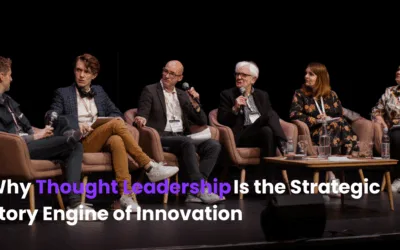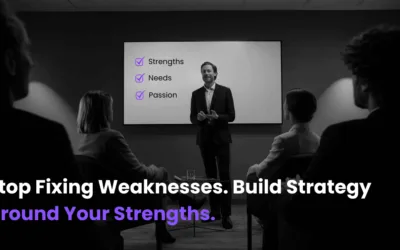If your landing page says one thing, your pitch deck says another, and your sales team has a third narrative – you’re not alone. And not in a good way. It sounds like your messaging architecture is out of alignment.
For many startups, scaleups, and innovation teams, inconsistent messaging isn’t just a marketing issue – it’s a growth bottleneck. Without a clear through-line, your brand gets diluted, your team loses focus, and your audience tunes out.
The solution? A simple, flexible messaging architecture that everyone can align to – built once, then applied everywhere. Sounds easy, right?
Why Does Messaging Break Down So Easily?
Innovation moves fast. Teams grow, pivots happen, new channels pop up, and before you know it, your original message has splintered across websites, decks, proposals, and press releases.
The result:
- Mixed signals in market
- Confused prospects
- Slower sales cycles
- Internal misalignment.
We often think this is just a marketing problem. It’s not – it’s a strategic risk.
As buyers get savvier (and more impatient), a fuzzy message can quietly remove you from their shortlist before your team even gets a meeting. That’s why you need a messaging architecture – and then stick to it.
What Is a Messaging Architecture?
Think of it as your north star for communication. It’s not a tagline or elevator pitch – it’s the system behind those things.
A good messaging architecture gives you:
- A central value proposition that speaks across audiences
- Layered messages for different personas or verticals
- A clear hierarchy: Core > Supporting > Proof
- Language that’s both repeatable and flexible.
It becomes the foundation for:
- Pitch decks
- Product pages
- Sales enablement
- Campaigns
- Thought leadership content
- CEO talking points.
In fact, when combined with a business model canvas, your messaging architecture will basically form the basis of your entire website, content plan and go-to-market strategy.
What a Through-Line Actually Looks Like
So what is a messaging through-line and why is it important? Let’s say you’re building AI tools for regulated industries. Your messaging architecture might start like this:
Core Message:
“We help compliance-heavy teams adopt AI without breaking trust.”
Supporting Points:
- Embed AI into existing workflows
- Train teams on safe, effective use
- Prove ROI without compromising on risk
Proof:
- Case studies
- Quotes from clients
- Data on AI adoption outcomes
When you have the detailed case studies, quotes from clients and the data on outcomes, you’ll have a very compelling storyline. And that means everyone in your team – from product to partnerships – can tell the same story. And the story will scale consistently. That’s the power of a through-line.
Why Messaging Architectures Matters More Than Ever
Today’s buyers are making faster decisions based on independent research. They’ll scroll your website, LinkedIn, and third-party platforms before they talk to sales.
If your story is fractured across those touchpoints? You’re out.
In a world of shrinking shortlists and 50+ pre-MQL touchpoints, consistent, value-led messaging is your edge.
Want to Build Your Own Messaging Architecture?
We’ve created the Key Themes and Messages Handbook to help teams like yours:
- Clarify your message at every stage of growth
- Align internal teams around a unified narrative
- Scale thought leadership and advocacy with consistency
Download the handbook now. It’s free, practical, and ready to use.
A Final Thought on Messaging Architecture
Inconsistent messaging isn’t a surface issue – it’s a symptom of deeper misalignment across your business. We often run workshops designed to rebuild alignment across teams. These workshops deliver the alignment that’s needed.
Once you have a clear architecture in place, you give your team (and your audience) a reason to believe – and a story they can stick to.



